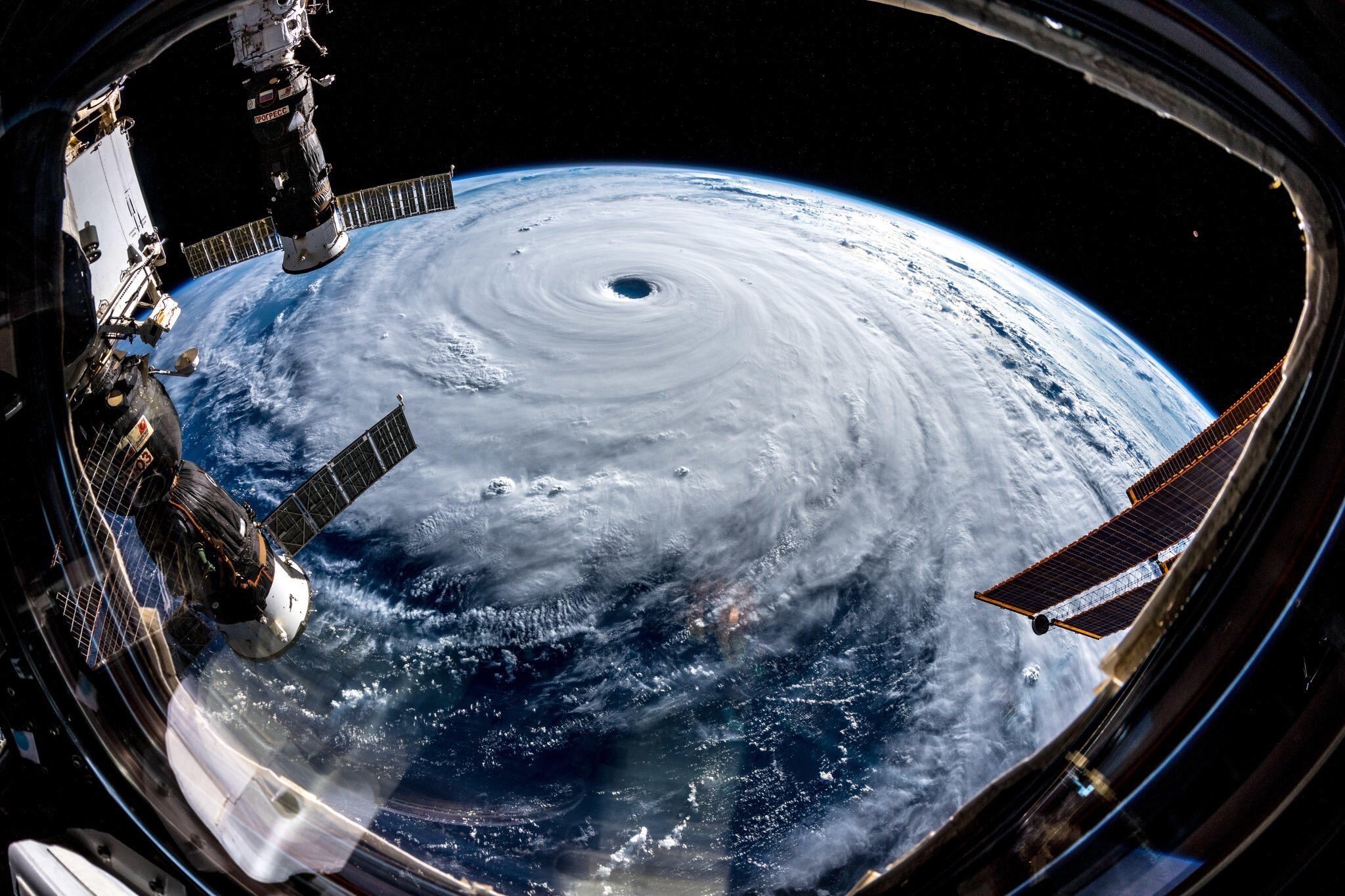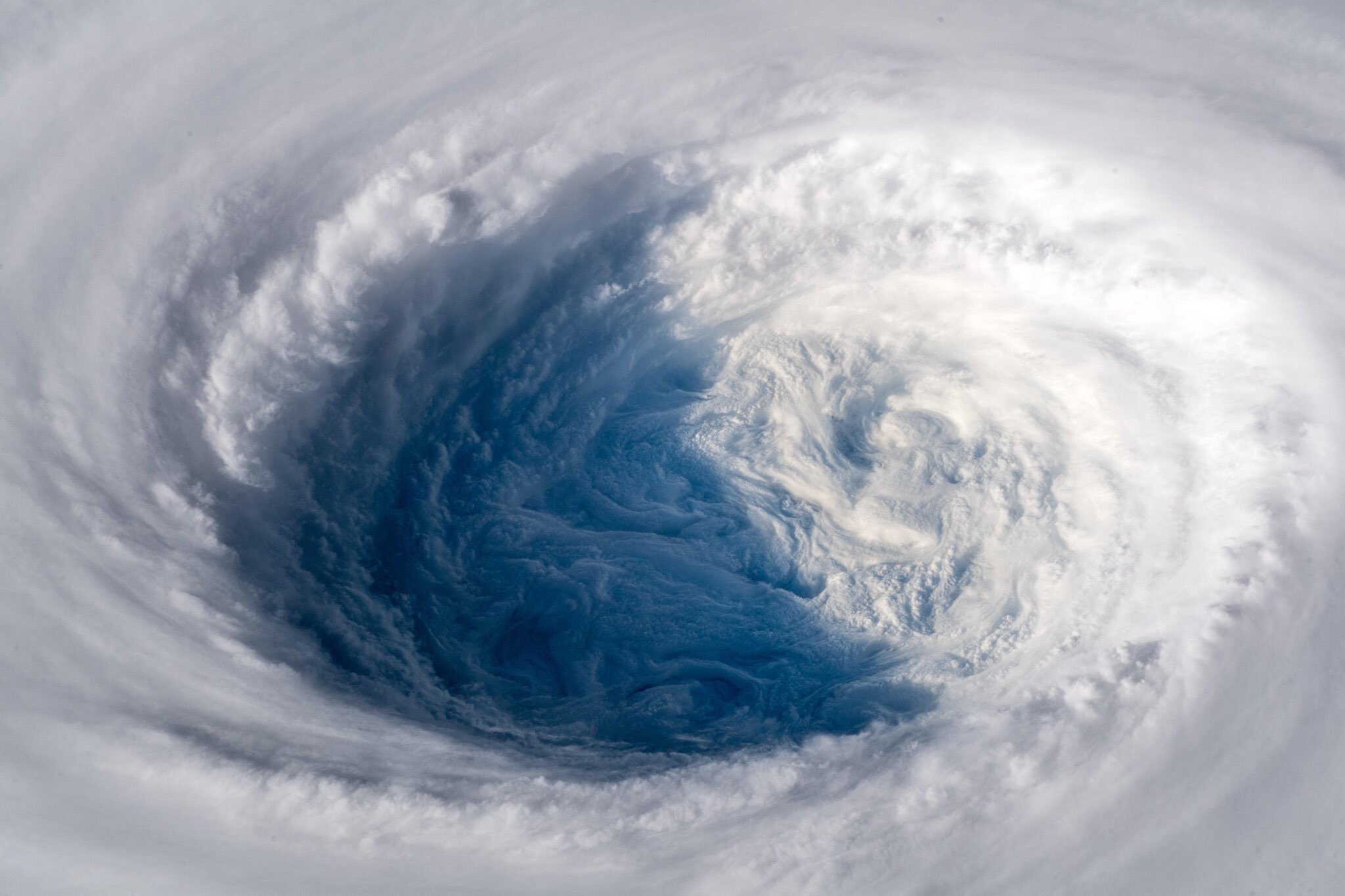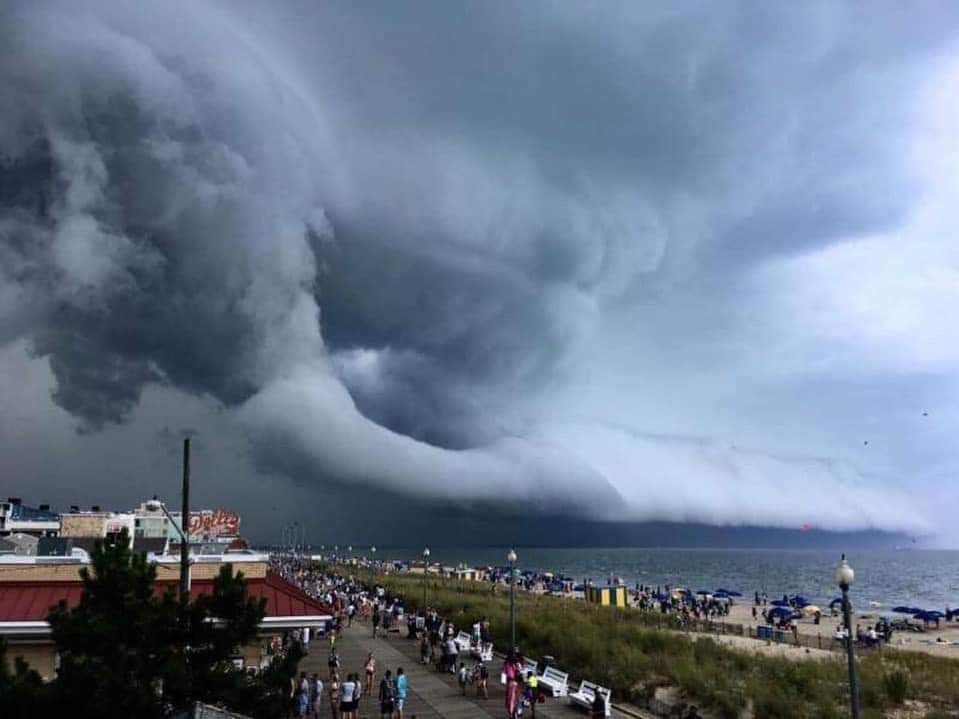Typhoon Hagibis approaching the southeast coast of Japan on last Wednesday. Typhoon Hagibis made landfall in Japan on Saturday, bringing violent winds, record rainfall and flooding.
Credit : NASA
From NYTimes by Mariel Padilla and Jennifer Jett
Powerful tropical storms occur all around the world, but what they’re called depends on where they form.
When a tropical storm pummeled Japan on Saturday with gusts of up to 135 miles per hour, forcing millions to evacuate their homes, it was called Typhoon Hagibis.
But the storm that carved a path of destruction across the Bahamas in September was Hurricane Dorian.
And when the most powerful storm to hit Bangladesh in years destroyed thousands of homes in May, it was called Cyclone Fani.
Surging waves in Kiho, Japan, on Friday.
credit : Toru Hanai/Associated Press
What is the difference between a typhoon, a hurricane and a cyclone?
It comes down only to the storm’s location.
All three are tropical cyclones — circular storms that form over warm waters with very low air pressure at the center, and winds greater than 74 miles an hour.
But different terms are used for such storms in different parts of the world.
The word “hurricane” is used for the storms that form in the North Atlantic, the northeastern Pacific, the Caribbean Sea or the Gulf of Mexico.
Typhoons develop in the northwestern Pacific and usually threaten Asia.
image : ISS
The international date line serves as the Pacific Ocean’s dividing marker, so when a hurricane crosses it from east to west, it becomes a typhoon instead, and vice versa.
The same kinds of storms in the Southern Hemisphere are easier to keep straight.
In the southern Indian Ocean or the South Pacific, they are called tropical cyclones or severe tropical cyclones.
In the Bay of Bengal or Arabian Sea, both in the northern Indian Ocean, they are simply called cyclones.
The rising Isuzu River in Ise, Japan, on Saturday.
Credit Kyodo News, via Associated Press
A season for every storm
In addition to having different names, hurricanes, typhoons and cyclones also have different seasons.
The Atlantic hurricane season officially runs from June 1 to Nov. 30.
The Pacific season starts slightly earlier.
Typhoons can form year round, but are most common from May to October.
The next cyclone season in the South Pacific will begin on Nov. 1 and end on April 30, 2020.
In the southern Indian Ocean, the season begins two weeks later and ends at the same time, except in the island nations of Mauritius and the Seychelles, where it extends to May 15.
Cyclones in the northern Indian Ocean have no official season, but tend to be concentrated from May to November.
What are hurricanes, typhoons and tropical cyclones and how do they form?
James Chubb at MetOffice explains how we classify the different storms and how they are formed.
Whatever they are called, tropical cyclones generally become weaker after they hit land, since they draw their energy from water evaporating from the oceans below them.
But they can travel quite far inland before they dissipate, wreaking havoc through wind damage, torrential rains and flooding.
Storms whose winds are not quite strong enough to qualify as tropical cyclones are called tropical storms if their sustained winds are 39 to 73 miles an hour, or tropical depressions (a reference to the low pressure at their core) below that range.
Tropical cyclones around the world are named according to a listmaintained by the World Meteorological Organization.
The names of the deadliest storms, like Typhoon Haiyan or Hurricane Katrina, are retired.
Typhoon Hagibis
Grading a storm’s intensity
Hurricanes are rated in categories from 1 to 5 on the Saffir-Simpson scale, which is based on sustained wind speed.
According to the National Hurricane Center, storms in Category 3 or higher, which have wind speeds of at least 111 miles per hour, “are considered major hurricanes because of their potential for significant loss of life and damage.”
Super Typhoon Hagibis.
Earth's power & beauty on display.
Typhoons are monitored by the Japan Meteorological Agency, which also rates them by sustained wind speed.
It uses three classifications: “typhoon,” “very strong typhoon” or “violent typhoon.”
Powerful Typhoon Hagibis brings strong waves to the southern tip of Japan's Izu Peninsula.
It is forecast to crash into land in central or eastern Japan early Saturday evening, packing maximum gusts of 216 kilometres per hour (134 miles per hour), Japan's Meteorological Agency (JMA) said.
The super Typhoon Hagibis, now approaching Japan, is the 4th category 5 storm of 2019.
In the Pacific there was Typhoon Wutip, while in the Atlantic there was hurricane Dorian and Lorenzo.
The above animation shows the movement of Typhoon Hagibis using the Copernicus Marine Service product “Global Ocean Waves Analysis and Forecast updated Daily” significant wave height (in meters) from October 8th-14th, 2019.
Our forecast up to October 14th predicts up to 15 metre significant wave heights starting around October 10th, and these wave trains are expected to hit the southwestern coast of Japan on the 12th of October.
The significant wave height is the average height of the highest one-third of all waves. Hence, maximum wave height could be 1.5 to 2 times higher.
According to the Meteo France waves model team, that works on this Copernicus Marine Service product, wave height is generally predicted with good confidence for extreme weather events within wave models.
source : Copernicus
The Joint Typhoon Warning Center, a United States military command in Pearl Harbor, Hawaii, also issues storm advisories using the designations “tropical depression,” “tropical storm,” “typhoon” and “super typhoon.”
Cyclones in the Indian Ocean are classified according to two intensity scales, depending on where they are, with terms like “very intense tropical cyclone” and “super cyclonic storm.”
Australia rates cyclones much the way North America rates hurricanes, in categories from 1 to 5.
As violent as they are, these storms help to regulate the global climate, by moving heat energy away from the tropics and toward the poles.
Naming the storms
Storm terminology has been highly influenced by the histories and cultural interactions of different regions.
“Hurricane” appeared in English in the 16th century as an adaptation of the Spanish word “huracán.” “Typhoon” is variously described as coming from Arabic (“tafa”) or Chinese (“taifeng”), or perhaps both.
“Cyclone” was coined in the late 18th century by a British official in India, from the Greek for “moving in a circle.”
A fascinating look at how a little girl walking in the sand of the African desert could cause a hurricane 4000 miles away.
But a storm by any other name should still be taken seriously.
Links :
- The Guardian : Typhoon Hagibis: 110,000 join rescue effort as survivors tell of 'incredible' storm
- YouTube : What's the Difference Between a Typhoon and a Hurricane?
- GeoGarage blog : Hurricanes, typhoons and cyclones: storms ... / Super Typhoon Haiyan, one of strongest ... / Amazing map shows the past 170 years of hurricanes to hit ...







No comments:
Post a Comment